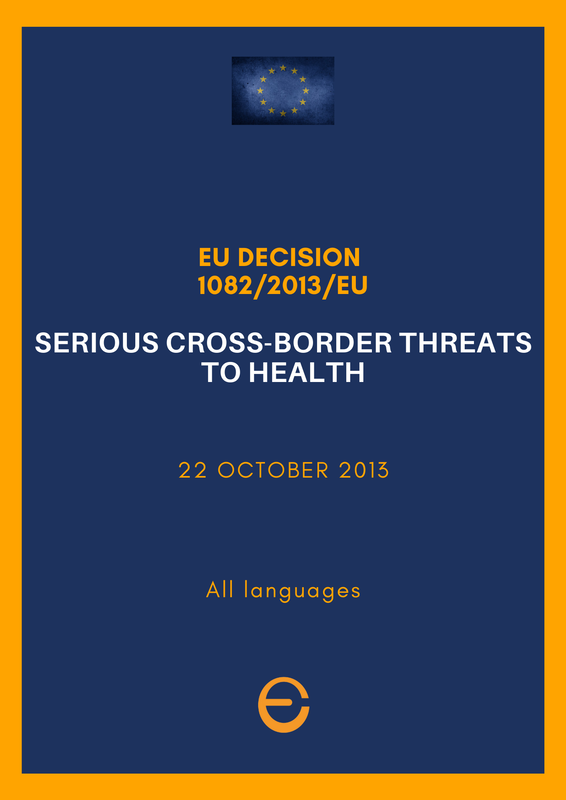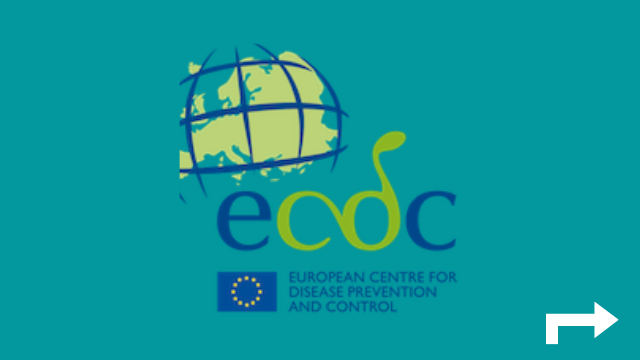|
Last updates: |
|
Health Security and Infectious Diseases
The population is constantly under threat from infectious diseases. Pandemic influenza (H1N1) in 2009, the E. Coli epidemic in Germany in 2011, the Ebola virus threat in West Africa in 2014, Zika in 2016 have been the threats of the past years.
After relative calm, a pandemic hit the world's population in 2019. The COVID-19 pandemic has brought an unprecedented challenge to public health. Combating cross-border health threats, such as epidemics and pandemics, require adequate preparedness and coordinated action before, during and after a crisis.
After relative calm, a pandemic hit the world's population in 2019. The COVID-19 pandemic has brought an unprecedented challenge to public health. Combating cross-border health threats, such as epidemics and pandemics, require adequate preparedness and coordinated action before, during and after a crisis.
On 11 November 2020, the European Commission proposed a new health security framework to address future health challenges. It will extend the role of EU Agencies in coordinating preparedness and response measures. In this regard, the European Authority for Health Emergency Preparedness and Response (HERA) was created on 16 September 2021, joining HCDC and EMA Agencies.
How to prevent and react to health threats?
- Surveillance and monitoring for detect and identify a threat, epidemic or crisis using early warning channels and with European notification. This requires reliable procedures and other tools that health authorities can use to exchange information quickly and in a targeted manner. Go to the web page
- Reliable risk assessment to decide if and how to respond to a threat. Go to the web page
- Crisis management. Go to the web page
- Analysis and responses to antimicrobial resistance which is a very important growing public health problem. Go to the web page
- Coordination for epidemics such as HIV / AIDS, viral hepatitis and tuberculosis. Go to the web page
- Preparedness for terrorist attacks, hybrid threats and all forms of man-made threats to the public.. Go to the web page
EU cross-border action Decision and a new Regulation
|
An important legislation for improving health security in the EU and for cooperation between member countries was the adoption of Decision 1082/2013 on Serious cross-border health threats. The goal is to support EU Member States to fight cross-border threats and to help the protection of the citizens against possible future pandemics and serious cross-border health threats. Notably by:
The new EU Regulation Based on the lessons learned from the new 2019 Coronavirus, the EU is discussing a proposal for a new Regulation COM/2020/727 final on serious cross-border health threats, which repeals the Decision 1082/2013/EU currently in force and which should create the conditions for stronger coordination at the level of the EU. With the declaration of a European health emergency situation, greater coordination shall be activated and will allow the development, storage and procurement of products relevant to the crisis. In addition, the European Commission and EU Agencies, in particular the European Center for Disease Prevention and Control (ECDC), will regularly test and audit pandemic preparedness plans at EU and national levels. ECDC will also create a strengthened, integrated surveillance system at EU level, using artificial intelligence and other advanced technological means. EU countries will be required to step up their reporting of health systems indicators (e.g. hospital beds availability, specialised treatment and intensive care capacity, number of medically trained staff). As for April 2022, the EU Council is discussing a compromise proposal with European Parliament. Here the comparative table on 4 columns. |
EU Authorities and Agencies for health threats
|
. HERA - European Health Emergency preparedness and Response Authority
On 16 September 2021, the EU launched the new EU Authority to prevent, detect, and rapidly respond to health emergencies, full operational from early 2022. In case a public health emergency at EU level is declared, HERA can quickly switch to emergency operations, including swift decision making and the activation of emergency measures, under the steer of a high-level Health Crisis Board. It will activate emergency funding and launch mechanisms for monitoring, new targeted development, procurement and purchase of medical countermeasures and raw materials. |
|
. ECDC - European Centre for Disease Prevention and Control An agency of the European Union ECDC is an EU agency aimed at strengthening Europe's defences against infectious diseases. The core functions cover a wide spectrum of activities: surveillance, epidemic intelligence, response, scientific advice, microbiology, preparedness, public health training, international relations, health communication, and the scientific journal Eurosurveillance. ECDC disease programmes cover:
|
|
. EMA - European Medicines Agency
The mission of the European Medicines Agency (EMA) is to foster scientific excellence in the evaluation and supervision of medicines, for the benefit of public and animal health in the European Union. In particular, to facilitate development and access to medicines, to evaluate applications for marketing authorisation, to monitor the safety of medicines across their lifecycle and to provide information to healthcare professionals and patients. In addition, to coordinate studies to monitor the effectiveness and safety of vaccines and to coordinate clinical trials. |
ROLES & TASKS OF HERA, EMA, ECDC
Cross-border health threats Decision
An important legislation for improving health security in the EU and for cooperation between member countries was the adoption of Decision 1082/2013 on serious cross-border health threats.
It supports EU Member States to fight cross-border threats and helps to protect citizens against possible future pandemics and serious cross-border health threats by:
- strengthening preparedness planning capacity at EU level by reinforcing co-ordination and best practice and information sharing on national preparedness planning
- operating a rapid alert system for notifying serious cross-border threats to health that require a coordinated response at Union level – the EU Early Warning and Response System
- improving risk assessment and management of cross-border health threats
- establishing the necessary arrangements for the development and implementation of a joint procurement mechanism of medical countermeasures and deployment mechanisms for MCM
- enhancing the coordination of an EU-wide response by providing a solid legal mandate to the Health Security Committee to co-ordinate national responses to serious cross-border threats to health and risk and crisis communication to provide consistent and coordinated information to the public and the health care professionals
- fostering international cooperation and global action
In 2020, following the pandemic of the new Coronavirus 2019, the European Commission presented a new proposal for a Regulation COM / 2020/727.
TIPS: If you want to be constantly informed on the ongoing legislative process in the European Institutions on EU Health Policy and take part to the debate, fill the form at the bottom of this page.








